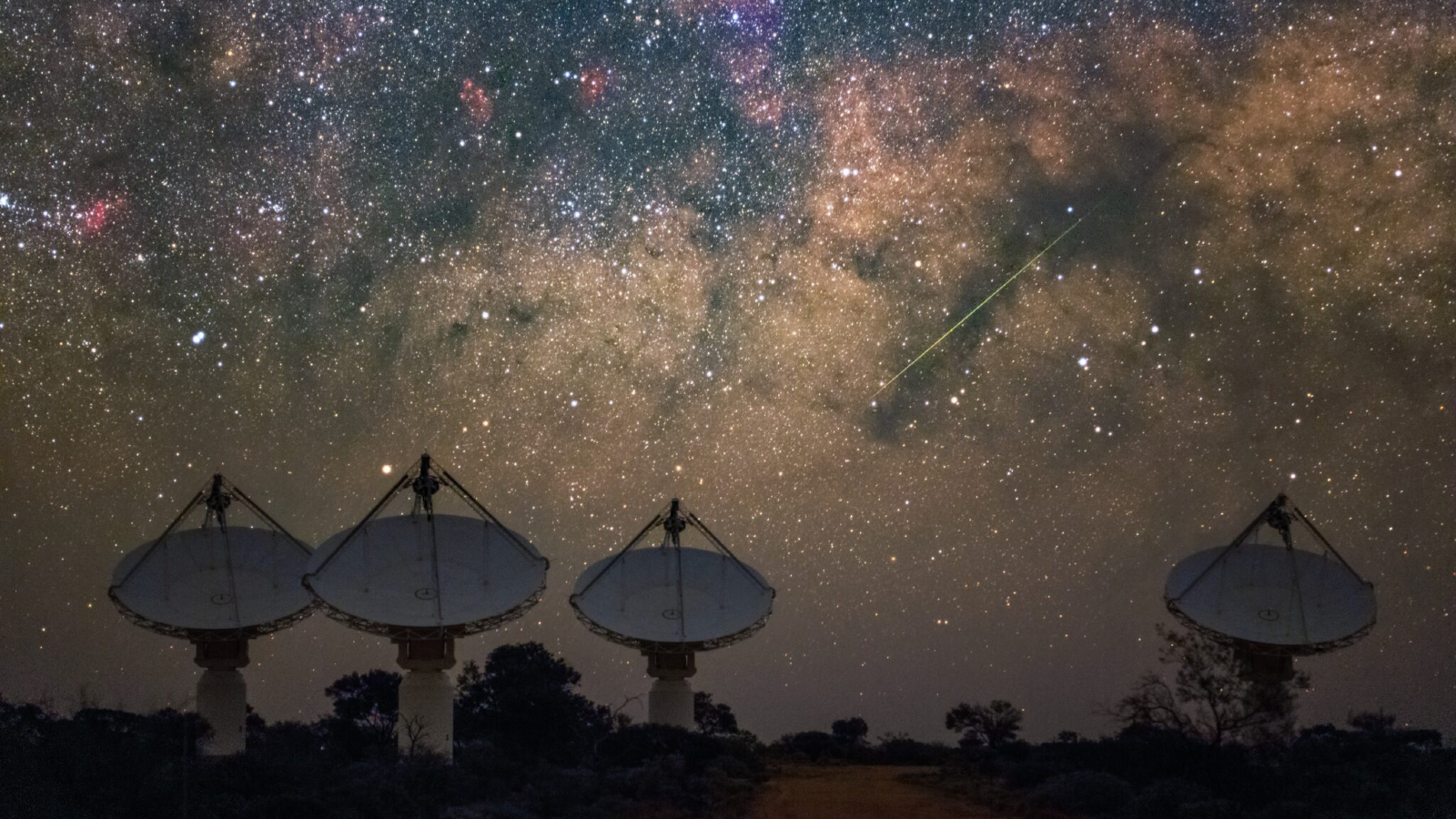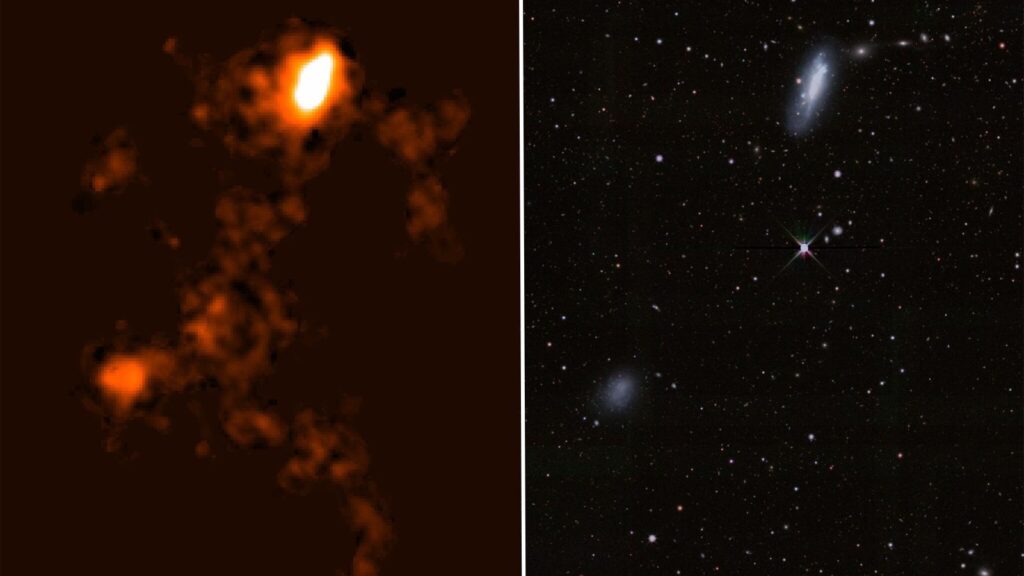Astronomers have discovered a giant, almost invisible bridge of gas, about twice as wide as the entire Milky Way, connecting a pair of distant dwarf galaxies. The neighboring objects also share a record-breaking galactic tail that is more than 15 times as long as the galaxy is wide.
The dwarf galaxy pair NGC 4532 and DDO 137 are located at the edge of the Virgo cluster of more than 1,000 galaxies, about 53 million light-years from Earth. This pair is similar to the Large Magellanic Cloud (LMC) and Small Magellanic Cloud (SMC), neighboring dwarf galaxies that closely orbit the Milky Way, but are not bound into a single entity. Instead, they seem to be slowly falling into the Virgo cluster.
you may like
In a study published September 23 in Monthly Notices of the Journal of the Royal Astronomical Society, researchers reanalyzed Wallaby data and discovered a giant gas bridge bridging the approximately 185,000 light-year gap between NGC 4532 and DDO 137. The newly realized bridge forms a nearly perfect straight line and contains an unexpectedly high concentration of star-forming gas.
Behind this thick bridge were several faint tendrils of gas, including a huge tail fin that was 1.6 million light years long. This makes it the longest galaxy tail ever observed, surpassing the 1.5 million light-year tail discovered after the NGC 4839 galaxy cluster in 2023, the researchers wrote.

Both the bridge and the tail are made from neutral hydrogen gas, a key building block for creating new stars and galaxies.
“Neutral hydrogen plays an important role in star formation, and this discovery is fundamental to understanding how galaxies interact and evolve, especially in dense environments,” study co-author Kenji Toji, an astrophysicist at the University of Western Australia (UWA) and the International Center for Radio Astronomy Research (ICRAR), said in a statement.
Researchers suspect that the bridge was formed more than a billion years ago in a “pass,” or near miss, between two dwarf galaxies when they narrowly avoided colliding with each other. The tidal forces from this interaction are thought to have pulled large clumps of neutral hydrogen from smaller galaxies toward larger galaxies, where they have spread between galaxies ever since.
Meanwhile, the pair’s long tail may be stretched by a phenomenon known as “ram pressure.” This is caused by galaxies moving through the super-hot gas clouds surrounding the Virgo cluster, which are up to 200 times hotter than the surface of the Sun. As the two fell into this cosmic hell, the gas in their shared bridge was slowly sheared away into a tail.
“This process is similar to the burning of the atmosphere as a satellite re-enters Earth’s upper atmosphere, but over a period of more than a billion years,” study lead author Lister Staveley-Smith, an astronomer at UWA and ICRAR, said in a statement. It’s also the same process that formed NGC 4839’s 1.5 million light-year tail.
Further analysis of bridges and tails, as well as similar structures that may be lurking in the Wallaby data, could help researchers better understand how galaxies change over time.
“Understanding these gas bridges and their dynamics provides important insights into how galaxies evolve over time, how galactic gas is redistributed, and the various conditions under which galaxies form stars or not,” Staveley-Smith said.
Comparing the resulting dwarf galaxies to LMCs and SMCs could also shed light on how these structures evolve with and without larger galactic partners, the researchers wrote.
Source link

